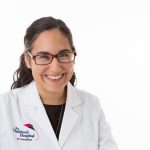Some state rheumatology societies have also worked to add advanced practice providers into rheumatology rotations.
“As powerful as the U.S. government is, I think addressing the workforce shortage is going to happen locally, so the initiatives in Georgia, Rochester, [N.Y.], and elsewhere across the country are exciting,” says Dr. Worthing.
Looking Ahead
Despite the challenges ahead, Dr. Jonas is optimistic about the future of rheumatology, which has become a competitive subspecialty in the U.S.
“In addition to a marked increase in the number of applicants for rheumatology training, the quality of applicants we are receiving is extremely high,” she says. “The outlook for rheumatology is strong, and our work now is addressing ways to train more rheumatologists and get them in practice in the communities that need them.”
Kelly April Tyrrell writes about health, science and health policy. She lives in Madison, Wis.
References
- Battafarano DF, Ditmyer M, Bolster MB, et al. 2015 American College of Rheumatology Workforce Study: Supply and demand projections of adult rheumatology workforce (2015–2030). Arthritis Care Res (Hoboken). 2018 Apr;70(4):617–626.
- Deal CL, Hooker R, Harrington T, et al. The United States rheumatology workforce: Supply and demand, 2005–2025. Arthritis Rheumatol. 2007 Mar;56(3):722–729.
- Douglas-Gabriel D. This court ruling could have big implications for public-service loan forgiveness. Washington Post. 2019 Feb 25.
- BillTrack50. GA HB442: Education; grant program to encourage certain physicians to practice in underserved areas of the state; create. Introduced Feb. 22, 2019.

